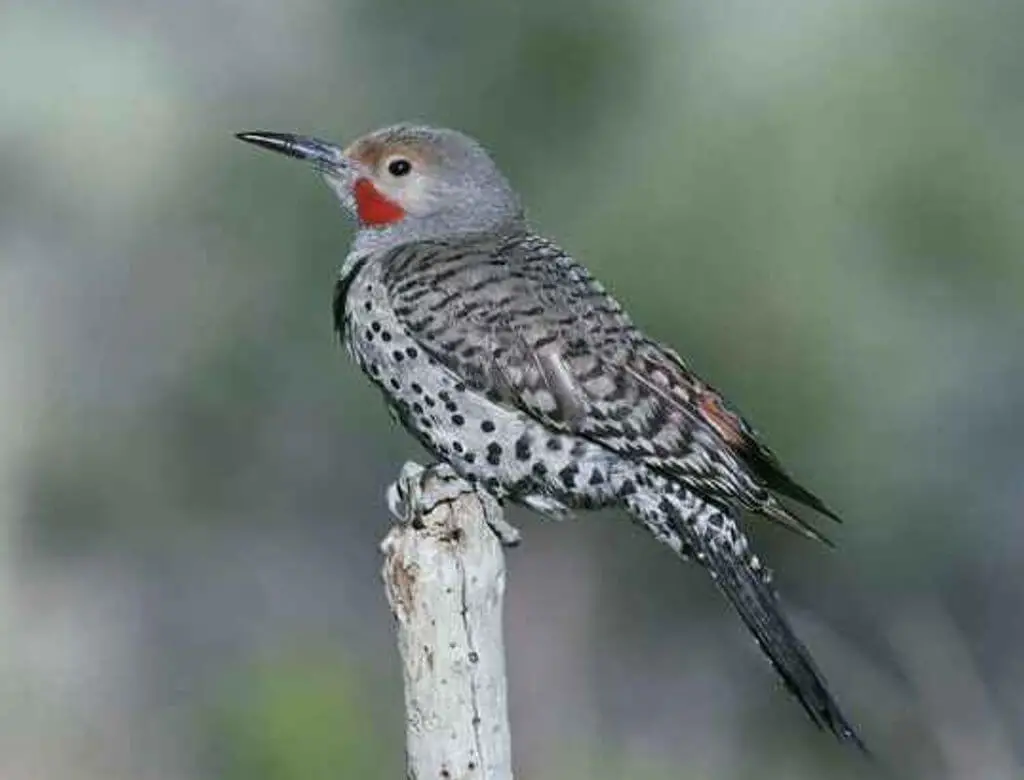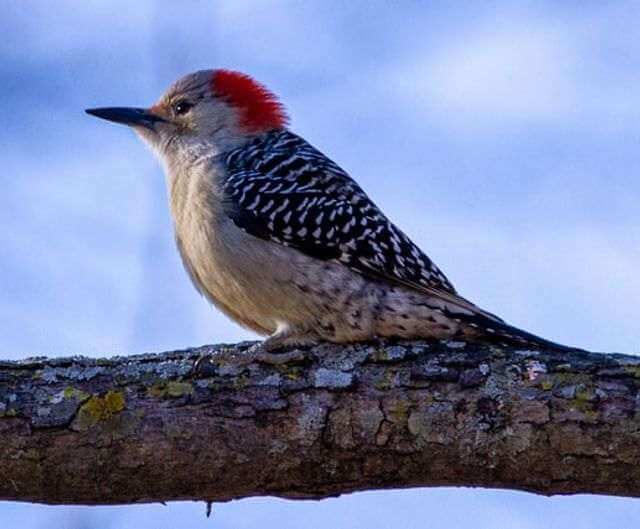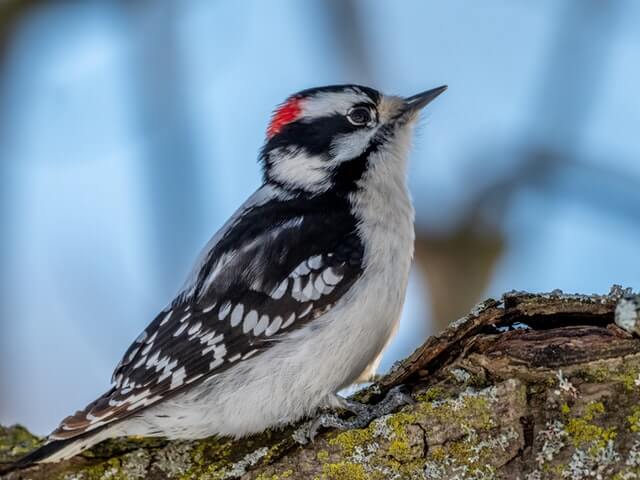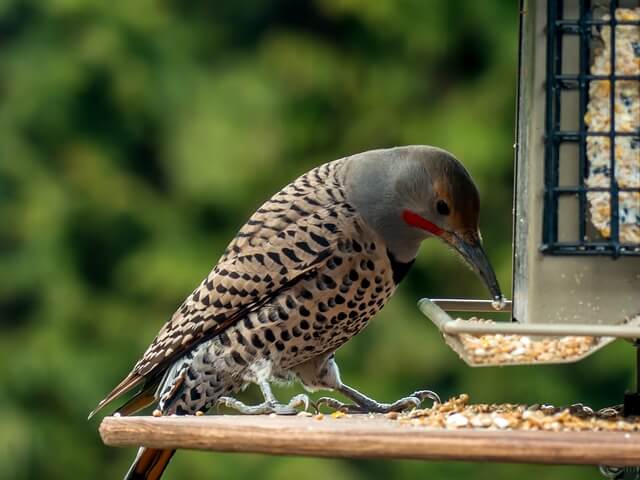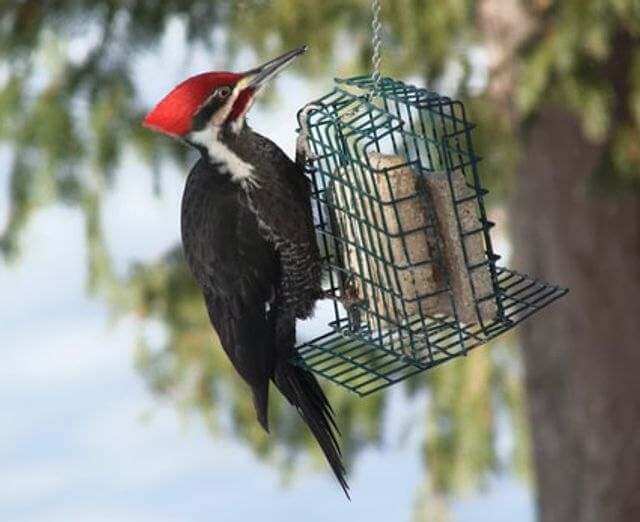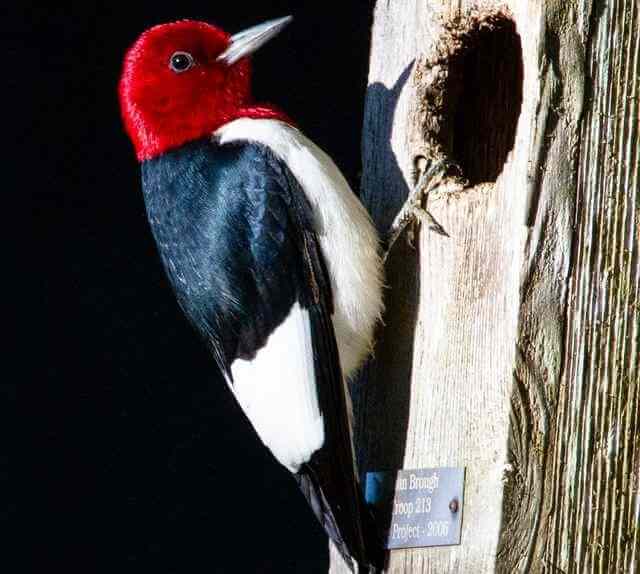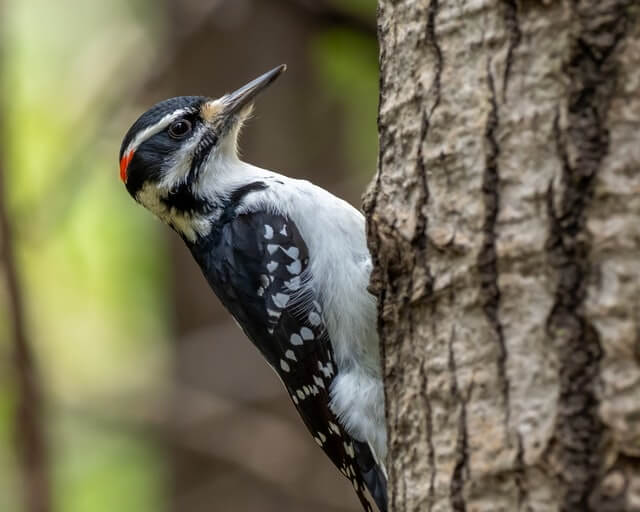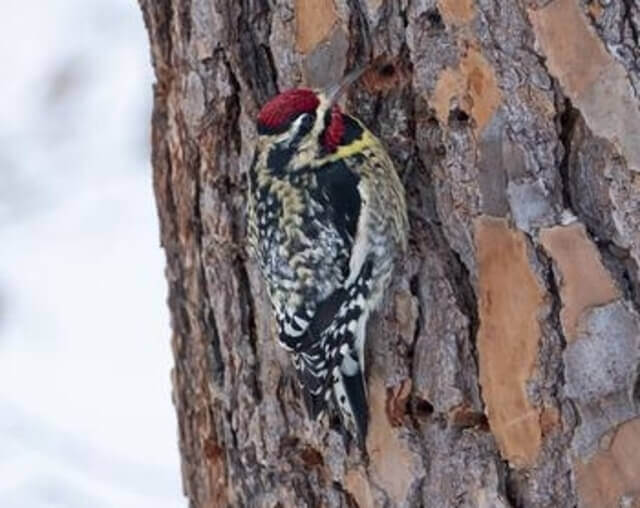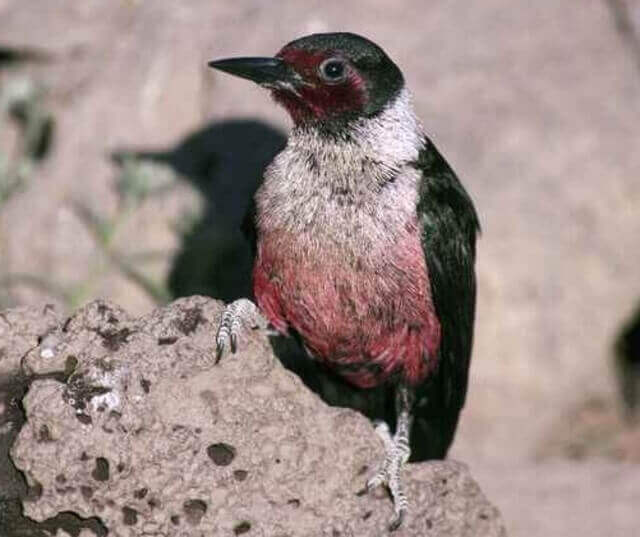Welcome to our comprehensive guide on the 9 types of woodpeckers you can find in Arkansas! Woodpeckers are fascinating birds known for their distinctive drumming and pecking behaviors.
In this ultimate guide, we’ll explore the various species of woodpeckers native to Arkansas, their unique characteristics, habitats, and behaviors.
Whether you’re a bird enthusiast, nature lover, or simply curious about Arkansas wildlife, this guide is your go-to resource for learning all about these remarkable birds.
Table of Contents
Types of Woodpeckers in Arkansas
Red-bellied Woodpecker
- Length: 9.5 in (24 cm)
- Weight: 2.0-3.2 oz. (56-90 g)
- Wingspan: 13.0-16.5 in (33-42 cm)
- Scientific Name: Melanerpes carolinus
- Frequency of Occurrence: 40.80% (Statistic by: eBird)
- Where To Find Them: In Arkansas, the red-bellied woodpecker can be found in a number of different locations, including the Ouachita and Ozark Mountains, the Arkansas River Valley, and the Delta region.
- How to Attract: Put out a feeder filled with suet, peanuts, or sunflower seeds. Another way to attract red-bellied woodpeckers is by providing them with a place to nest. A rotted tree stump or an old piece of lumber can serve as a perfect nesting site. Finally, make sure you provide plenty of water for the birds by putting out a bird bath or fountain.
Description: The Red-bellied Woodpecker is a medium-sized woodpecker found in eastern North America. They range from southern Canada to central Florida, and west to Texas and eastern Oklahoma. They are a forest bird, but can also be found in parks and suburbs.
The diet of the Red-bellied Woodpecker consists mostly of insects, but they will also eat fruit and nuts. This bird builds its nest in a tree cavity, using materials such as bark, twigs, and mud.
Related Post: How to Attract Red-bellied Woodpeckers to your Yard?
Downy Woodpecker
- Length: 5.5-6.7 in (14-17 cm)
- Weight: 0.7-1.0 oz. (21-28 g)
- Wingspan: 9.8-11.8 in (25-30 cm)
- Scientific Name: Picoides pubescens
- Frequency of Occurrence: 32.32%
- Where To Find Them: These birds are found throughout most parts of Arkansas, but they are not common in the highlands of the Ouachita Mountains.
- How to Attract: Downy Woodpeckers are a very common backyard bird in North America. They can be attracted to your yard by providing them with a food source, water, and shelter. The best way to provide a food source for Downy Woodpeckers is to offer them suet. Suet is a high-fat, bird-food that can be purchased at most pet stores or bird feeders. Downy Woodpeckers will also eat insects, so you can also provide them with a variety of insects such as mealworms or crickets. Water is also important for Downy Woodpeckers. You can provide them with a bird bath or simply place a bowl of water on the ground. Shelter is also important for these birds.
Description: The Downy Woodpecker is a small, North American bird that ranges throughout most of the United States and parts of Canada. They inhabit a variety of habitats, but prefer deciduous or mixed forests. Downy Woodpeckers feed on insects, primarily wood-boring beetles, as well as spiders, ants, and caterpillars.
They nest in tree cavities, typically excavating their own hole, but will also use natural cavities or man-made structures. The female lays 4-6 eggs and both parents help incubate and care for the young.
Related Post: How to Attract Downy Woodpeckers to Your Yard? (Easy!)
Northern Flicker
- Length: 11.0-12.0 in (28-31 cm)
- Weight: 3.9-5.6 oz. (110-160 g)
- Wingspan: 16.5-20.0 in (42-51 cm)
- Scientific Name: Colaptes auratus
- Frequency of Occurrence: 17.31%
- Where To Find Them: Northern Flickers are typically found in the eastern and central parts of Arkansas. In the east, they can also be in the Ozark and Ouachita Mountains, as well as in the Mississippi Alluvial Valley. In the central part of the state, they can be seen in the Boston Mountains and the Buffalo National River area.
- How To Attract: They are easily attracted to yards that have feeders with sunflower seeds or suet. The best time to put out the feeders is in the early morning or late evening when the birds are most active. You can also plant trees and shrubs that produce berries, such as crabapple, elderberry, and sumac. If you provide a place for the Northern Flickers to nest, they will likely stay in your yard all year long.
Description: The Northern Flicker is a medium-sized woodpecker found in North America, Europe, and Asia. In the United States and Canada, it ranges from the east to the west coast, and as far north as Alaska.
Northern Flickers inhabit a variety of habitats including open woodlands, forests, parks, and gardens. They are often seen foraging on the ground for insects. Northern Flickers nest in tree cavities, where they lay 4-7 eggs.
Related Post: How to Attract Northern Flickers to your Backyard (Easy)
Pileated Woodpecker
- Length: 15.8-19.3 in (40-49 cm)
- Weight: 8.8-12.3 oz. (250-350 g)
- Wingspan: 26.0-29.5 in (66-75 cm)
- Scientific Name: Dryocopus pileatus
- Frequency of Occurrence: 14.86%
- Where To Find Them: In Arkansas, they can be seen in the Ouachita and Ozark Mountains, as well as the Crowley’s Ridge area.
- How To Attract: Provide a food source. Pileated woodpeckers love to eat ants, beetle larvae, and other insects. You can provide a food source by putting out a bird feeder filled with insect-rich food or by planting insect-eating plants in your yard. Offer a water source. Pileated woodpeckers need water to drink and bathe in.
Description: The Pileated Woodpecker (Dryocopus pileatus) is a large woodpecker found in eastern and central North America. It ranges from southern Quebec to the Gulf of Mexico, and from the Atlantic coast to western Texas.
The Pileated Woodpecker inhabits deciduous forests and mixed woodlands. It feeds on insects, nuts, and fruit. The Pileated Woodpecker nests in trees, often making a hole in a dead limb or trunk. A typical clutch consists of four or five eggs.
Related Post: How to Attract Pileated Woodpeckers to your Yard (Fast)
Red-headed Woodpecker
- Length: 7.5-9.1 in (19-23 cm)
- Weight: 2.0-3.2 oz. (56-91 g)
- Wingspan: 16.5 in (42 cm)
- Scientific Name: Melanerpes erythrocephalus
- Frequency of Occurrence: 6.91%
- Where To Find Them: Some areas or locations where you might be able to find the red-headed woodpecker in Arkansas include the Ozark National Forest, the Buffalo National River, and Petit Jean State Park.
- How to Attract: The first thing you need to do is provide a food source. This can be done by putting out a feeder filled with suet or peanut butter, or by planting a variety of trees and shrubs that produce berries and nuts. You also need to provide a place for the woodpecker to perch, such as a dead tree, fence post, or birdhouse. Lastly, you need to make sure that there is plenty of insects for the woodpecker to eat.
Description: The Red-headed Woodpecker is a medium-sized woodpecker that ranges throughout most of the eastern and central United States. They prefer open woodlands, forest edges, and parks with large trees. These birds feed primarily on insects, but also eat fruit, nuts, and seeds.
Red-headed Woodpeckers nest in tree cavities, either natural or excavated by the birds themselves. The female typically lays 4-5 eggs, which are incubated by both parents for about two weeks. Young birds remain in the nest for another three or four weeks before fledging.
Related Post: Interesting Red-Headed Woodpecker Facts (Explained)
Hairy Woodpecker
- Length: 7.1-10.2 in (18-26 cm)
- Weight: 1.4-3.4 oz. (40-95 g)
- Wingspan: 13.0-16.1 in (33-41 cm)
- Scientific Name: Picoides villosus
- Frequency of Occurrence: 6.31%
- Where To Find Them: Some good places to look for them are in the Ouachita and Ozark Mountains, as well as in the forests near the Buffalo National River.
- How to Attract: First, try planting some trees that the birds might enjoy. Some good options include oak, maple, and pine trees. You can also provide a source of water for the birds, either by installing a bird bath or filling a small pool with water. Finally, you can also provide food for the woodpeckers. One of their favorite foods is ants, so you can try setting up an ant farm near your yard. Other good options include suet cakes, sunflower seeds, and cracked corn.
Description: The Hairy Woodpecker is a medium-sized woodpecker that ranges from the Pacific Northwest to the Gulf of Mexico. They live in deciduous and coniferous forests, as well as orchards, plantations, and suburban areas. These birds feed mainly on insects, but they will also eat fruit, nuts, and seeds.
Hairy Woodpeckers nest in tree cavities, either natural ones or those excavated by the birds themselves. The female lays 4-7 eggs and incubates them for about two weeks. The young are then fed by both parents for about six weeks before they fledge.
Yellow-bellied Sapsucker
- Length: 7.1-8.7 in (18-22 cm)
- Weight: 1.5-1.9 oz. (43-55 g)
- Wingspan: 13.4-15.8 in (34-40 cm)
- Scientific Name: Sphyrapicus varius
- Frequency of Occurrence: 5.75%
- Where To Find Them: The yellow-bellied sapsucker can be seen in areas of Arkansas including the Ozark and Ouachita Mountains. They are also found in the eastern part of the state near the Mississippi River.
- How to Attract: Sapsuckers are attracted to sap, so providing a tree that leaks sap will help lure these birds to your yard. You can also hang feeders filled with insects or suet near trees. Another way to attract sapsuckers is by creating a nesting site. These birds prefer dead trees or branches for nesting, so leaving dead trees or branches in your yard will give the birds somewhere to nest.
Description: The yellow-bellied sapsucker is a medium-sized bird that can be found in the US and Canada. They are usually between 7 and 9 inches long, and have a black head, back, and wings with a white throat and belly.
Their diet consists mainly of insects, but they will also eat fruit and sap from trees. Yellow-bellied sapsuckers breed in the spring, nesting in holes in trees. The female lays 4-7 eggs, which the male incubates for 12-14 days. The young birds stay with the parents for about two months.
Related Post: 16 Interesting Sapsucker Facts Revealed!
Red-cockaded Woodpecker
- Length: 7.9-9.1 in (20-23 cm)
- Weight: 1.5-1.8 oz. (42-52 g)
- Wingspan: 14.2 in (36 cm)
- Scientific Name: Picoides borealis
- Frequency of Occurrence: 0.2281%
- Where To Find Them: The woodpecker is typically found in pine forests and can be spotted in parts of the Ouachita and Ozark Mountains. In addition, the bird can also be seen in the eastern part of the state near the Arkansas River Valley.
- How to Attract: You can help attract them to your yard by providing the necessary habitat features and food sources. The first step is to provide a mature hardwood forest with a mix of pines and oaks. The woodpeckers need a place to roost, forage, and nest. Dead trees or logs that are still standing are also important for their habitat. You can also provide food sources by putting out suet feeders or bird seed mixes that include black oil sunflower seeds, peanuts, and cracked corn. Pieces of fruit or berries can also be put out in the winter months.
Description: Red-cockaded woodpeckers are endemic to the southeastern United States, where they inhabit a variety of habitats including longleaf pine forests, bottomland hardwood forests, mixed pine and hardwood forests, and oak hammocks.
They primarily feed on insects, although they also consume fruit and sap from trees. Red-cockaded woodpeckers nest in mature pine trees, excavating a cavity in the trunk or a dead limb. The female typically lays 5-6 eggs, which are incubated by both parents for 16-18 days.
Lewis’s Woodpecker
- Length: 10.2-11.0 in (26-28 cm)
- Weight: 3.1-4.9 oz. (88-138 g)
- Wingspan: 19.3-20.5 in (49-52 cm)
- Scientific Name: Melanerpes lewis
- Frequency of Occurrence: 0.0001%
- Where To Find Them: They can be seen in areas near water and in woodlands. Some good places to look for them are in the Ozark and Ouachita Mountains, as well as along the Arkansas River.
- How to Attract: Lewis’s Woodpeckers like to eat insects, so offer them a bird feeder filled with freeze dried insects or insect suet. You can also plant trees and shrubs that provide them with food and shelter. Lewis’s Woodpeckers like oak, hickory, and pine trees, as well as blackberry bushes and sumac plants. You can also provide Lewis’s Woodpeckers with a place to nest. They like to nest in dead trees or branches, so leave some dead wood lying around your yard.
Description: Lewis’s Woodpecker is a medium-sized, black and white woodpecker found in western North America. The range of the Lewis’s Woodpecker extends from southern British Columbia in Canada south through California and into Baja California, Mexico.
This woodpecker inhabits open woodland and forest habitats, preferring pine forests. Lewis’s Woodpeckers feed on insects and other invertebrates, as well as fruit. They nest in tree cavities, excavating their own nest hole or taking over an old woodpecker cavity.
Related Post: 37 Most Common Birds in Arkansas (with Photos & Details)

